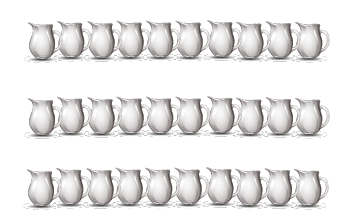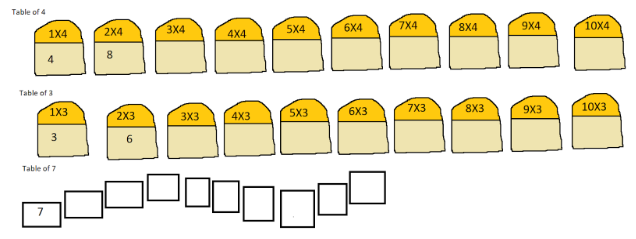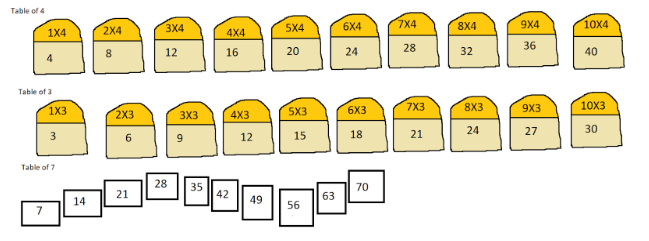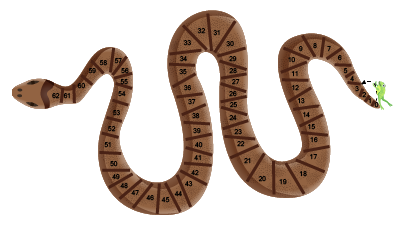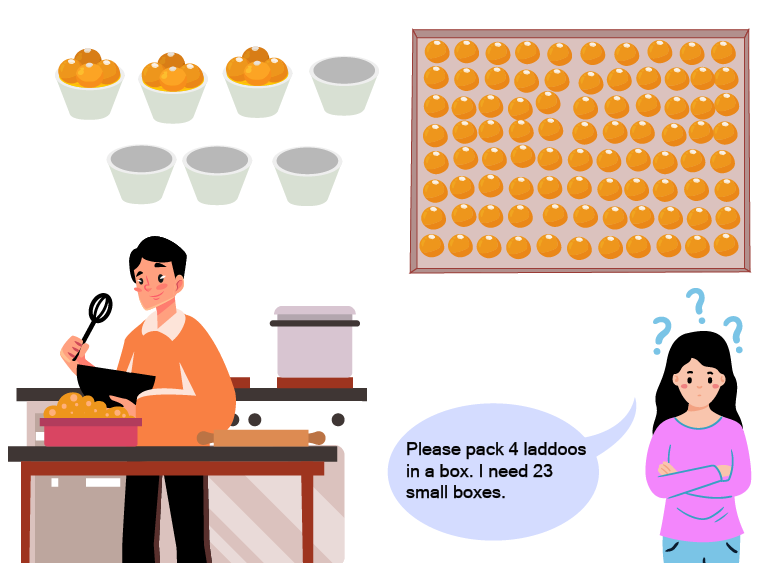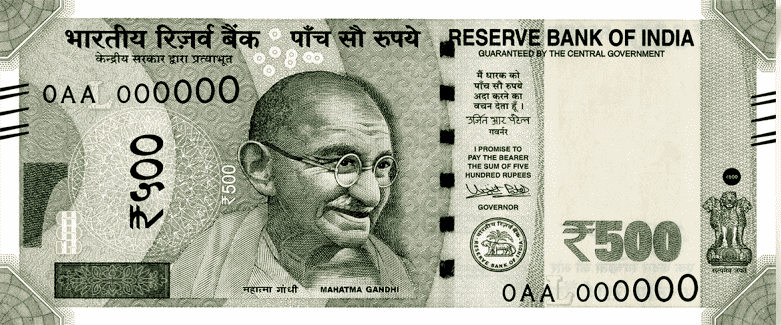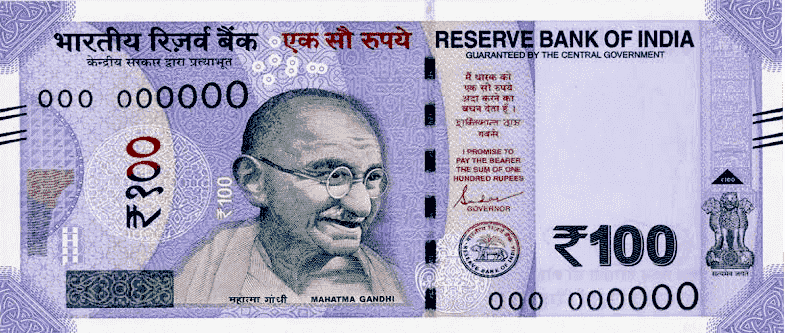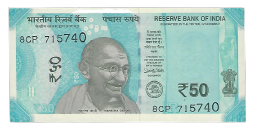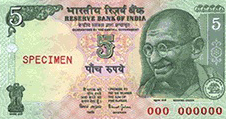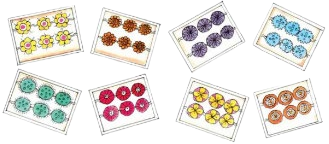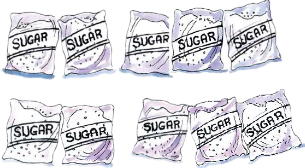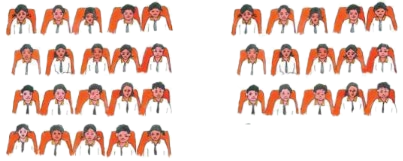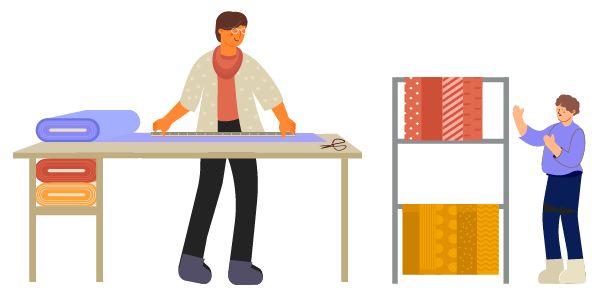Tables and Shares - Exercise-wise Questions and Answers For Class 4 Maths - Free PDF Download
FAQs on NCERT Solutions For Class 4 Maths Chapter 11 Tables and Shares - 2025-26
1. What are the NCERT Solutions for Class 4 Maths Chapter 11 'Tables and Shares' and how are the textbook questions solved stepwise as per CBSE 2025–26 guidelines?
NCERT Solutions for Class 4 Maths Chapter 11 'Tables and Shares' provide detailed, stepwise explanations for all intext and exercise questions as per the official CBSE 2025–26 NCERT textbook format. Each answer follows the prescribed NCERT method, breaking down every calculation and logic used. By reading these solutions, students get clarity on division, grouping, and equal sharing problems, making it easy to understand the correct approach for every question in the chapter.
2. Are the shells enough for making necklaces for all his friends?
Yes, according to the stepwise NCERT solution for this question in Class 4 Maths Chapter 11, the number of shells is sufficient for making necklaces for all his friends. The method used follows the NCERT pattern where you divide the total shells by the number of friends. The solution demonstrates that after equal sharing and making all the necklaces, some shells are left, which confirms sufficiency as per the CBSE approved answer format.
3. Which two tables will you use for writing the table of 12?
According to NCERT Solutions for Class 4 Maths Chapter 11, the table of 12 can be constructed using the tables of 10 and 2, or tables like 3 and 9—for example, 12 = 10 + 2 or 3 × 4. The answer shows a stepwise breakdown as per CBSE format, helping children relate new tables to known ones and reinforcing multiplication concepts.
4. How can I download the NCERT Solutions for Class 4 Maths Chapter 11 PDF in English medium?
You can easily download NCERT Solutions for Class 4 Maths Chapter 11 PDF in English medium from the Vedantu website. The PDF is based on the latest CBSE 2025–26 syllabus and presents every answer in the stepwise NCERT pattern for clarity and exam readiness. The download is free and covers both intext and exercise solutions for the entire chapter.
5. Is Class 4 Maths Chapter 11 considered easy according to the NCERT syllabus and solutions method?
Yes, as per the NCERT pattern and CBSE 2025–26 guidelines, Class 4 Maths Chapter 11, 'Tables and Shares,' is designed to be easy and engaging for students. The solutions make use of simple, stepwise explanations and everyday examples, making it accessible and fun to solve the exercises. Students following the NCERT answer format usually find this chapter straightforward when guided by official solutions.
6. Where can I find Class 4 Maths Chapter 11 worksheet with answers PDF as per NCERT?
Class 4 Maths Chapter 11 worksheets with answers in PDF format, prepared according to the NCERT syllabus and CBSE approved answer style, are available for free download on trusted educational sites like Vedantu. These worksheets follow the NCERT answer key approach, providing stepwise, solution-oriented practice for all types of questions from the chapter.
7. How do I solve sharing and grouping problems from Chapter 11 following the NCERT answer format?
To solve sharing and grouping problems in Chapter 11, use the stepwise NCERT solution method: first, read the question carefully to note numbers and what needs to be shared or grouped. Next, divide the total by the number of shares or groups as shown in the NCERT answer key, and write your answer in complete sentences, making sure to check your work as per the CBSE textbook solution approach.
8. What should I do if my answer to an NCERT exercise question in Chapter 11 is different from the NCERT Solutions provided?
If your answer differs, review the stepwise explanation in the official NCERT Solutions for Class 4 Maths Chapter 11. Ensure you have followed every calculation and logic as shown in the NCERT answer format. Often, mistakes come from skipping steps or misreading the question—so compare each step to the solution for accuracy as per CBSE guidelines.
9. Can I use these NCERT Solutions for Class 4 Maths Chapter 11 for CBSE 2025–26 exams?
Yes, these solutions strictly follow the NCERT textbook and are fully CBSE approved for the 2025–26 academic year. All questions are answered as per the latest NCERT answer key and stepwise method, making them suitable for exam preparation and assignments.
10. How do NCERT Solutions for Class 4 Maths Chapter 11 help in understanding tables and shares for future classes?
NCERT Solutions for Chapter 11 build a strong foundation in multiplication tables, grouping, and division concepts using the CBSE 2025–26 stepwise answer format. This structured approach not only clarifies chapter questions but also prepares students for advanced problem-solving in higher classes by establishing excellent calculation and reasoning habits.
11. What type of questions in Chapter 11 require equal sharing, and how are they solved using NCERT's stepwise solutions?
Chapter 11 frequently asks students to divide a set of objects (such as shells, seats, or sweets) equally among groups. In line with the NCERT stepwise approach, such questions are solved by dividing the total number by the number of groups and expressing the result clearly, often including any remainder, as demonstrated in the official textbook solutions.
12. What is the correct method to answer mixed word problems in Class 4 Maths Chapter 11 as per NCERT Solutions?
The correct NCERT method is to first identify key data and what is being asked, write the given and required parts, perform operations stepwise, and state the final answer in a complete sentence. NCERT Solutions model each of these steps clearly to ensure students develop the right answering habits for CBSE marking schemes.
13. Why are stepwise explanations important in NCERT Solutions for Class 4 Maths Chapter 11?
Stepwise explanations are crucial because they help students follow each logical step from problem to solution, mirroring the CBSE 2025–26 answer pattern. This not only helps in scoring well but ensures conceptual clarity and minimizes calculation errors, as emphasized throughout the NCERT textbook-driven answers.
14. Are the NCERT Solutions for Class 4 Maths Chapter 11, available online, the same as those in the official NCERT textbooks?
Yes, the NCERT Solutions provided online by Vedantu are strictly based on the official textbook content for Chapter 11 and are updated for CBSE 2025–26. They match the intext and exercise questions exactly, using the stepwise explanations and answer format required by NCERT standards.


























